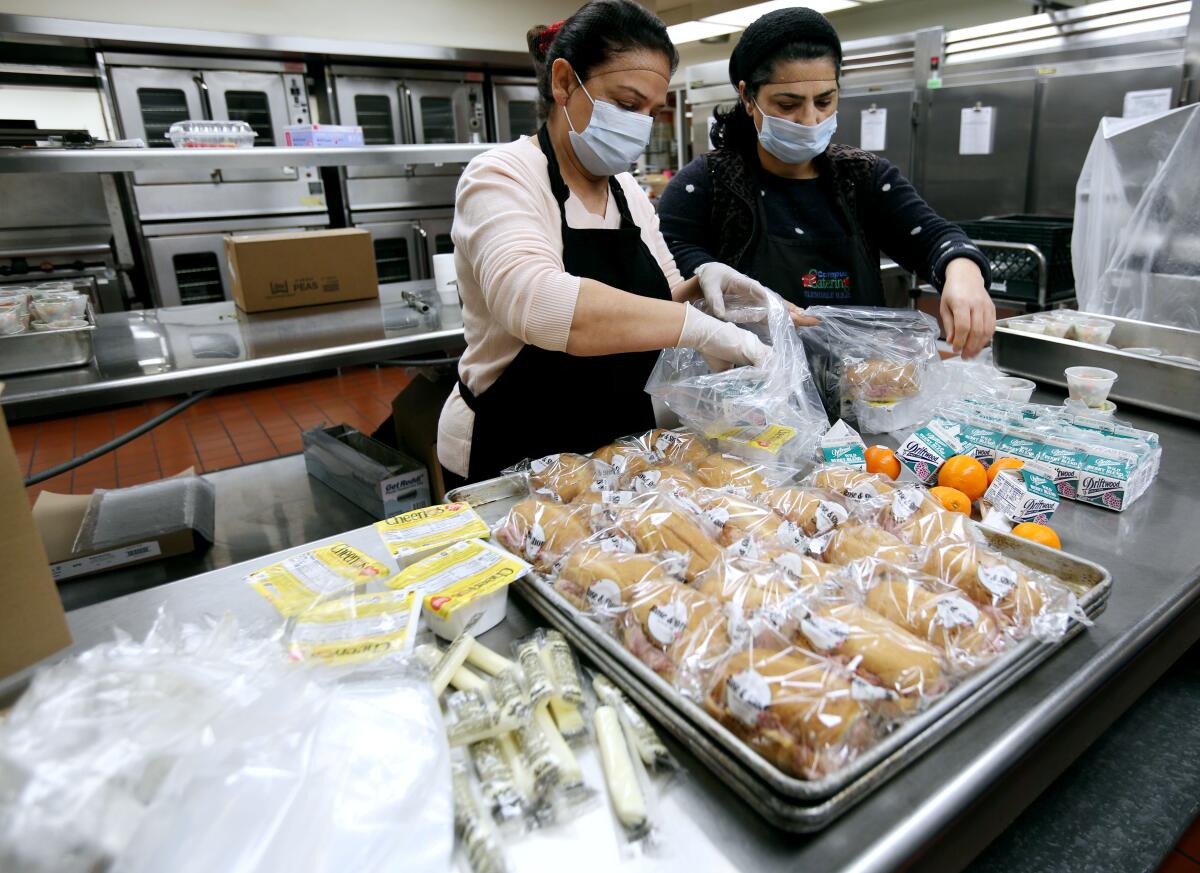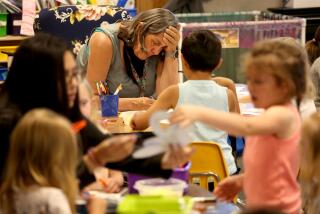Op-Ed: School custodians like me are considered essential workers. We’re not treated like it

- Share via
It’s back-to-school time again in California. This year, of course, looks so much different from any previous one I’ve experienced during my 37-year career as a school custodian. The vast majority of our students are learning from home and most of their teachers and instructional assistants are working from home as well. But that doesn’t mean our campuses are quiet.
At most any school site in California, you’ll find the informational technology staff prepping laptops and programming systems for learning remotely and office staff registering and keeping track of students every day to make sure they are engaged in distance learning. You’ll encounter security and maintenance departments striving to keep buildings safe and ready for students to return, observe custodians cleaning areas where their colleagues work, and you just might smell the fresh meals being prepared for distribution to students and the community, either on campus or delivered by bus drivers.
All of these jobs are performed by classified staff, a quarter million of whom I am proud to serve as president of the California School Employees Assn.
The state budget passed in June provides full funding for California’s public schools this year because leaders in Sacramento understand that schools cannot operate safely and effectively, either in-person or through distance learning, without the support of classified staff.
The budget states classified employees play a “critical role” in reopening schools and addressing the learning loss caused by COVID-19, and because of that school districts should “retain all classified employees and avoid layoffs.”
Yet at a time when our students need every resource available to make sure they are learning effectively from a distance, more than 4,640 classified jobs have been lost so far across 175 districts represented by the California School Employees Assn., according to association records. More than a quarter of those are para-educators, also known as instructional assistants — the very professionals whose job it is to identify students in need of one-on-one attention and deliver the extra help they need to succeed.
The Compton Unified and San Marino Unified school districts are even attempting to eliminate licensed nurses and health clerks in the middle of a pandemic. This is occurring despite California Department of Public Health requirements that all staff working on site are screened for coronavirus symptoms — and many districts have groups of students who are still learning in person.
Especially in low-income communities, school-based health professionals are often the only health professionals students and their families encounter. Even during distancing learning, these professionals perform a critical role by supporting the school community.
In mid-August, the Los Alamitos Unified School District decided to let go of about 300 classified staff members, citing a lack of work for them to do. Sure, the cuts don’t take effect until October and the district claims jobs will be restored when in-person learning resumes. But despite being given a green light to reopen elementary schools, the district has made no effort to hire back laid-off classified employees. This is simply saving a buck over serving a child.
In many districts, classified staff are performing their usual duties — including providing homework support and one-on-one instruction, and contacting families when a student has a problem that requires parental involvement. But they are also finding new ways for them to serve students during this unprecedented time.
Encinitas Unified School District, for example, has reassigned staff to remotely mentor students — up to 90 minutes a day — who may be struggling with schoolwork or simply may need a sounding board. In doing so, they are giving parents thrown into the role of educator a helping hand, whether it is with online learning or homework.
The Los Angeles Unified School District has committed to keeping all classified staff employed through the end of the calendar year. Huntington Beach Union High School District is among the districts actually hiring more instructional assistants during the distance-learning era. These districts know students need one-on-one instruction more than ever — to remediate learning loss after remote learning was instituted in the spring and to head off further learning losses.
Public education was founded on the overriding principle that every child, from every neighborhood, deserves a robust, high-quality education. When some districts redeploy their classified staff to help with academics and others don’t, the inequity gap in education widens even more.
The classified staff members in California school districts are professionals who have been trained to meet our students’ needs. They’ve passed background checks and built strong relationships with their students. They are an important part of their students’ education, and they are ready and willing to be deployed.
To avoid additional learning losses during the pandemic —and make distance learning a success — classified employees should be seen as what they are: essential staff.
Ben Valdepeña is president of the California School Employees Assn.
More to Read
A cure for the common opinion
Get thought-provoking perspectives with our weekly newsletter.
You may occasionally receive promotional content from the Los Angeles Times.










